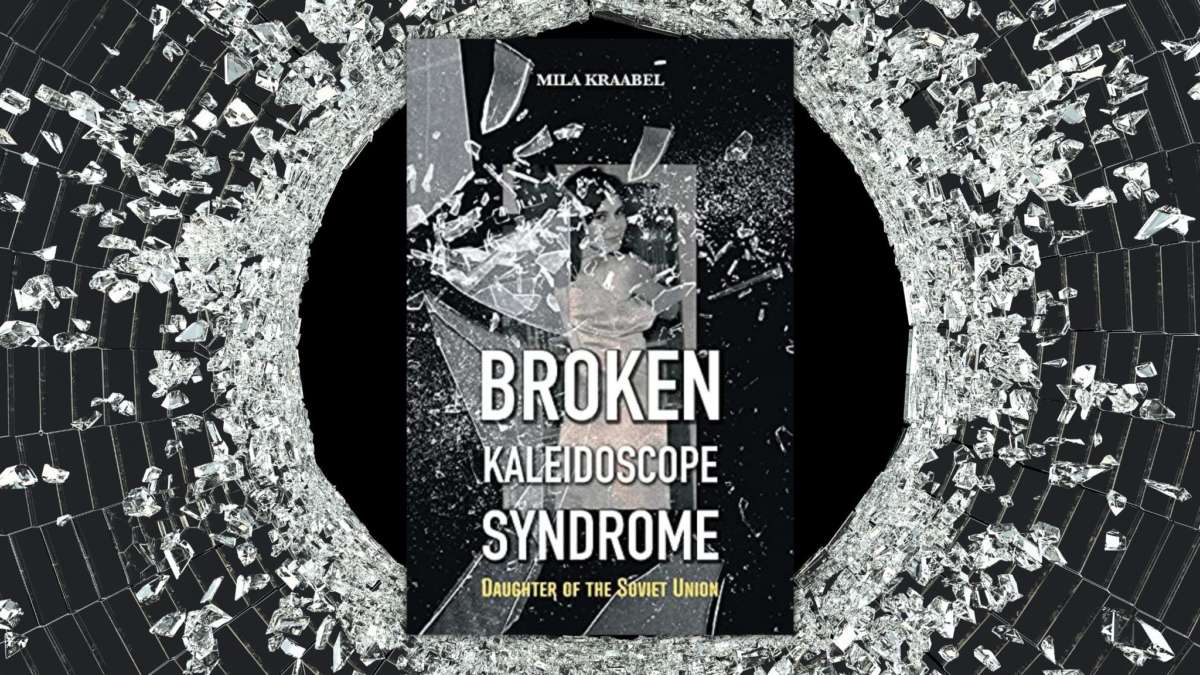Broken Kaleidoscope Syndrome: Daughter of the Soviet Union by Mila Kraabel
In her memoir, Broken Kaleidoscope Syndrome: Daughter of the Soviet Union, Mila Kraabel reflects upon her life in the Soviet Union, exemplifying the harsh experience of the millions of people who lived under what American President Ronald Reagan called the “Evil Empire.”
In this first-person account of her young life, Kraabel writes of surviving one of the deadliest earthquakes in Ashkhabad, of her family, her school, her musical education, her work, and the socialist ideals that had an underlying effect on almost every aspect of her life. She combines the funny moments with the tragic experiences that shaped her childhood to create a riveting and reflective account of her life in the Soviet Union. Through this recount of her own life, Kraabel aims to demonstrate the reality of all Soviet people.
Growing Up Under the Communist Party
Growing up in Ashkhabad, the capital of the Soviet Republic of Turkmenistan, in the wake of the Great Patriotic War, the values of communism were heavily instilled in Kraabel’s head. “Uncle Stalin” had led the Soviet Union to victory, and, as the Great Architect of Communism, he was trusted to provide for the people.
In some of her early childhood memories, Kraabel reveals her dream to serve in the Soviet Army, if only she were a boy. She writes, “For as long as I’d been in school, I’d dreamed of becoming a Pioneer.” As a member of the Vladimir Lenin All-Union Pioneer Organization, most of Kraabel’s youth was spent in service to Stalin and the Motherland. She truly believed that she lived in the best country in the world.
However, as Kraabel grows older, she begins to question the values and ideals of the Communist Party. She begins to give into the distrust of the government, realizing the hypocrisy and dangers of the Communist Party.
Various conversations with her parents bring to light the misfortunes her family suffered under Stalin’s regime. Of the Russians who escaped to Turkmenistan in the 1930s, many of them were imprisoned and killed by the regime. When her father tells her that her grandparents were kulaks, “enemies of the people,” she is shocked.
She is shocked to hear her father speak out against the Communist Party. Shocked to hear him say, “Most of the kulaks were not enemies. They were good farmers who lived better than others because they worked hard. That’s not a crime.”
It takes Kraabel nearly two decades, but she finally comes to understand the hypocrisy and lies of the Communist government.
A Child’s Vivid Recount of Life in the Soviet Union
Kraabel’s life story is told with gripping detail and vivid imagery. Scenes, both beautiful and heartbreakingly gruesome, are described in her memoir. Though she writes of many happy memories growing up with her friends and cousins on Bagirskaya Street, her life was not without tragedy. At a young age, Kraabel was exposed to death, natural disaster, and long-term separation from her family.
In her recount of the Ashkhabad earthquake, she writes of “an endless stream of people – limping, holding their broken limbs, carried on blankets or pushed on carts.” The horrors of the aftermath of this natural disaster are captured in Kraabel’s language as she paints a scene of death, ruin, and heartbreak.
No detail is too small for Kraabel to leave out. She courageously writes of her strained relationship with her father, the abuse she endured from her ex-husband, and her eventual escape to the United States in 1996: “the generous country which [she] now considers the only real Motherland.”
Kraabel’s language is captivating, inviting readers into her everyday life as a child in the Soviet Union, as well as bravely telling the hardships, struggles, and heartbreaks of the Soviet people.
An Important Story to Tell
Broken Kaleidoscope Syndrome is accessible to all readers – those who grew up around the same time as Kraabel and those who know nothing about the history of the former USSR. Intertwining funny personal anecdotes with tragic life events, Kraabel crafts a narrative that reflects the experience of nearly all those brainwashed into believing the best of their hypocritical leaders in the Soviet Union.
When examining Kraabel’s narrative, there are many parallels that can be drawn between the past and the present. The propaganda, brain washing, lies, and corruption which Kraabel faced are still ever present today under Vladimir Putin in Russia, making this an important and relevant story for all readers.
 About Mila Kraabel:
About Mila Kraabel:
Mila Kraabel is a writer from Turkmenistan, one of the 15 former Soviet Socialist Republics. She lived in Ashkhabad for almost half a century before immigrating to the US. She holds a degree in English language from the Turkmen State University. In her free time, she plays piano, reads, and enjoys watching sunsets over Lake Washington.





